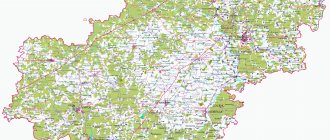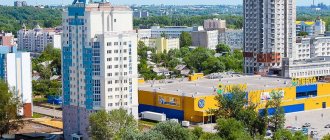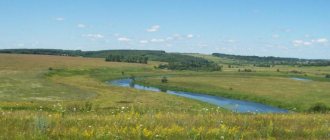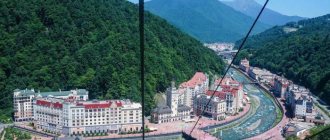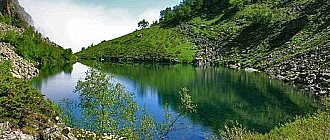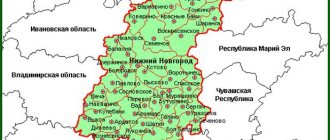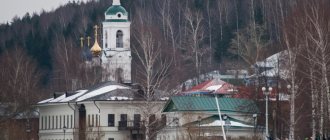The Pskov region is located in western Russia. Historically, in ancient times, on the site of this small region there was a principality, which was owned by the Moscow princes. To find out about the location of settlements, use the satellite map of the Pskov region. It allows you to view in detail streets and houses, rivers and forests, as well as any objects in the region.
The region is located on the border with 3 foreign countries:
- Latvia;
- Belarus;
- Estonia.
In the north, the borders of the region are limited by the Leningrad region, and in the east by Novgorod and Tver regions. All border settlements can be found on the map of the Pskov region by district. It is convenient to travel using the online service. You can quickly locate cities, find roads and railway stations.
In the region on the border with Estonia there is one of the largest lakes in Europe - Pskovsko-Chudskoye. There are practically no large rivers in the region. The most significant - Velikaya, as the map of the Pskov region with diagrams shows, is located in the western part. The main rivers of the region also include:
- Lovat;
- Plussa;
- Cherekha;
- Shelon;
- Issa.
The Velikaya, Zhelcha and Chernaya rivers are navigable. There is a fishing fleet in the region. The reservoirs of the region are famous for their habitat of delicious smelt fish.
Districts on the map of the Pskov region
Looking at the areas on the map of the Pskov region, you will notice that the north of the region is dense forests. And in the central and southern parts there are a large number of lakes. There are many small settlements in the region that are abandoned by residents and completely abandoned. In total, about 1 million people live in the region, but the population decreases every year.
The region has a well-developed transport infrastructure. You can come to the region from Moscow along the M-9 federal highway, and from St. Petersburg - along the M-20 highway. All travel routes are displayed on a detailed road map of the Pskov region. Asphalt highways connect the capital of the region, Pskov, with cities such as:
- Riga;
- Velikie Luki;
- Vitebsk;
- Rzhev;
- Talin;
- Smolensk
If you are traveling around the region or crossing it to get to other regions, use a map of the Pskov region with settlements, which will become an indispensable assistant on the way.
The region is divided into 24 districts with independent administrative centers. The most densely populated areas are Velikoluksky and Ostrovsky districts. And the least number of people live in the Krasnogorodsky district, which, as a detailed map of the Pskov region shows, is located in the southwest of the region.
Territorial division of the Pskov region
By resolution of the Presidium of the All-Russian Central Executive Committee of December 10, 1928, the Podlozhsky and Skorodnensky village councils were transferred to the Gdovsky district. By the resolution of the Central Executive Committee and the Council of People's Commissars of the USSR dated July 23, 1930, the Luga District was abolished, and the district was directly subordinated to the region. By a resolution of the Presidium of the All-Russian Central Executive Committee of January 1, 1932, the Gryazkovsky and Zapolsky village councils of the Luga region and the Bitinsky, Volkovsky, Dolzhitsky, Igomelsky, Polyakovsky village councils of the abolished Plyussky district were annexed. By resolution of the Presidium of the All-Russian Central Executive Committee of February 15, 1935, Bitinsky, Volkovsky, Gryazkovsky, Dolzhitsky village councils were transferred to the newly formed Plyussky district. By resolution of the Presidium of the All-Russian Central Executive Committee of March 22, 1935, it was included in the Pskov District. By resolution of the Presidium of the All-Russian Central Executive Committee of August 20, 1935, the Polyakovsky village council was established. On February 22, 1939, the Supreme Soviet of the RSFSR abolished the Lomovsky Village Council. By the Decree of the Presidium of the Supreme Council of the RSFSR of September 19, 1940, the district was abolished, the district was directly subordinated to the region. By decree of the Presidium of the Supreme Soviet of the USSR of August 23, 1944, the region was included in the Pskov region. By decision of the Pskov Regional Executive Committee of March 8, 1951 No. 98, the Igomel Village Council was abolished, the territory was transferred to the Orekhovsky Village Council. By the Decree of the Presidium of the Supreme Soviet of the RSFSR of June 16, 1954, the village councils were united: Aadynsky, Glebovogorsky, Zapolsky, Orekhovsky - and Gleboao-gorsky; Gorsky, Zaaodsky, Zayansky - and Zayansky; Aleksineky, Lyadsky, Svarets-ky - to Lyadsky; Kotoshsky, Lyublevsky, Muzoversky, Novoselsky - to Lositsky; Redoselsky and Yazvinsky - and Vasilievsky; Tupitsinsky village council was renamed Borovensky. By decree of the Presidium of the Supreme Council of the RSFSR of October 3, 1959, the district was abolished. Borovensky and Vvsilyevsky village councils were transferred to the Gdoa district, Glebovogorsky, Zayansky, Lositsky, Lyadsky - to the Plyussky district. NASVINSKY DISTRICT Center - Nasva village (1927-1932) Formed as part of the Velikoluksky district of the Leningrad region by a resolution of the Presidium of the All-Russian Central Executive Committee dated August 1, 1927 from the Nasvinskaya volost, part of the territories of the Novosokolnicheskaya and Zinovievskaya volosts of the Velikoluksky district. The district includes the following village councils: Batratsky, Brutovsky, Gorozhansky, Dunyansky, Krasnopakharsky (Krasnopakharsky), Lipshansky, Medvedkovsky, Nazaroasky, Nasvinsky, Oasischensky (Ovsishchsky), Samolukovsky. By resolutions of the Presidium of the All-Russian Central Executive Committee of June 3 and 17, 1929, the district was included in the Western Region. By the resolution of the Central Executive Committee and the Council of People's Commissars of the USSR dated July 23, 1930, the district was abolished, and the district was directly subordinated to the region. By a resolution of the Presidium of the All-Russian Central Executive Committee of September 20, 1930, the Vyazovsky, Korostelevsky, Lasichensky, Olokhovsky, Ostrovsky, Khobotovsky village councils of the abolished Rykovsky district were annexed. By resolution of the Presidium of the All-Russian Central Executive Committee of January 1, 1932, the district was abolished. The Ovsishchensky village council was transferred to the Velikoluksky district; Brutovsky, Dunyansky, Medvedkovsky, Nazarovsky, Olokhovsky, Samolukovsky, Khobotoesky village councils - into the Loknyansky district; Batratsky, Vyazovsky, Gorozhansky, Lipshvnsky, Lasichensky, Krasnopakharsky, Korostelevsky, Nasvinsky, Ostro-asky - part of the Novosokolnichesky district NEVELSKY DISTRICT Center - Nevel Formed as part of the Velikoluksky district of the Leningrad region by a resolution of the Presidium of the All-Russian Central Executive Committee dated August 1, 1927 from Volodarskaya (without Usvyatsky village council), Izochinskaya, Novokhovanskaya, Ust-Dolysskaya, Chernetsovskaya (Chernetsovsky, Shalakhovsky, Yaznensky village councils), part of the territory of Mayovskaya volost of Nevelsky district. During zoning, Chernetsovsky and Yaznensky village councils were abolished and Danilensky and Kanashovsky (Kanashevsky) were formed. By October 1, 1927, the district included the following village councils: Berezovsky, Vorobyovsky, Danilensky, Dominicovsky, Dubininsky, Emenetsky, Izochinsky, Kanashovsky, Karulinsky, Kozlovsky, Koshelevsky, Kubetsky, Leppovsky, Lekhovsky, Lovetsky, Moshinsky, Movo-Voznesensky, Pozdnoevsky (Poznoevsky), Pulkovsky, Sominsky, Staetsky, Staykovsky, Toporsky, Trekhalevsky, Turichensky, Ust-Dolyssky, Fenevsky, Fedkovsky (Fetkovsky), Shalakhovsky. At the end of 1928, Anisimovsky, Asnitsky, Dmitrovsky, Lomovsky village councils were formed. By the resolution of the administrative commission of the Presidium of the All-Russian Central Executive Committee of December 4, 1928, Anisimovsky, Asnitsky, Danilensky, Dmitrovsky, Kanashevsky, Lomovsky, Lovetsky, Trekhalevsky, Ust-Dolyssky, Fenevsky, Shalakhovsky village councils were transferred to the newly formed Ust-Dolyssky district, and in 1929 they were also transferred Kubetsky village council. By resolutions of the Presidium of the All-Russian Central Executive Committee of June 3 and 17, 1929, the district was included in the Western Region. By the resolution of the Central Executive Committee and the Council of People's Commissars of the USSR dated July 23, 1930, the district was abolished, and the district was directly subordinated to the region. By a resolution of the Presidium of the All-Russian Central Executive Committee of September 20, 1930, the village councils of the abolished districts were annexed: Borisoglebsky and Komshasky - Porechensky district, Danilensky, Kanashevsky, Kubetsky, Lovetsky, Trekhalevsky, Ust-Dolyssky, Fenevsky - Ust-Dolyssky district. By resolution of the Presidium of the All-Russian Central Executive Committee of January 29, 1935, the region was included in the Kalinin region. By a resolution of the Presidium of the All-Russian Central Executive Committee of February 5, 1935, it was included in the newly formed Velikoluksky district of the Kalinin region. By decree of the Presidium of the All-Russian Central Executive Committee of August 1, 1936, due to the disaggregation of Dubininsky, Leppovsky, Koshelevsky, Toporsky, Trekhalevsky village councils, Zaruchevsky, Ivanovsky, and Sovetsky village councils were formed. By a resolution of the Presidium of the All-Russian Central Executive Committee of May 4, 1938, the district was abolished, and the district was directly subordinated to the region. By decree of the Presidium of the Supreme Soviet of the USSR of August 22, 1944, it was included in the Velikiye Luki region. By decree of the Presidium of the Supreme Soviet of the RSFSR dated March 10, 1945, Borisoglebsky, Komsha, and Staykovsky village councils were transferred to the newly formed Porechensky district. By the Decree of the Presidium of the Supreme Soviet of the RSFSR of February 5, 1952, Vorobyovsky, Danilensky, Kanashovsky, Karulinsky, Kubetsky, Lovetsky, Trekhalevsky, Ust-Dolysky, Fenevsky village councils were transferred to the newly formed Ust-Dolyssky district. By decree of the Presidium of the Supreme Soviet of the RSFSR of June 16, 1954, the village councils were merged: Berezovsky and Moshinsky - into Berezovsky; Dubininsky and Emenetsky - to Dubininsky; Zaruchevsky, Koshelevsky, Movo-Voznesensky and Leppovsky - to Zaruchevsky; Fedkovsky and Toporsky - to Novokhovansky; Turichensky and Staetsky - to Turichensky; Dominikovsky and Sominsky - to Dominikovsky; Kozlovsky and Pulkovsky - to Puchkovsky. By decree of the Presidium of the Supreme Soviet of the RSFSR of October 2, 1957, the region was included in the Pskov region. By the Decree of the Presidium of the Supreme Soviet of the RSFSR of March 23, 1959, Vorobyovsky, Danilensky, Kanashovsky, Karulinsky, Kubetsky, Lovetsky, Trekhalevsky village councils of the abolished Ust-Dolyssky district were annexed. By decision of the Pskov Regional Executive Committee of April 8, 1959 No. 142 in connection with the transfer of the center to the village. Ust-Dolyssy Kubetsky village council was renamed Ust-Dolyssy. By the Decree of the Presidium of the Supreme Soviet of the RSFSR of October 3, 1959, Adamovsky, Kaloshinsky, Novo-Adamovsky, Safyanovsky, Uzkovsky, Usvyatsky, Tserkovishchensky, Chesnorsky village councils of the abolished Usvyatsky district were annexed. By decision of the Pskov Regional Executive Committee of April 25, 1960 No. 165, the village councils were merged: Turichensky and Dominicovsky - into Turichensky; Izochinsky, Vorobyevsky, Kvrulinsky - to Izochinsky; Berezovsky and Ivanovsky - to Ivanovsky; Zaruchevsky and Lekhovsky - to Koshelevsky; Pozdnoevsky and Puchkovsky - to Plissky; Dubinsky and Sovetsky - to Lobkovsky; Ust-Dolyssky and Kanashovsky - to Ust-Dolyssky; Lovetsky and Danilensky - to Lovetsky; Usvyatsky and Uzkovsky - to Usvyatsky; Tserkovishchensky, Adamovsky, Novo-Adamovsky - to Tserkovishchensky; Kaloshinsky and Safyanovsky - to Kaloshinsky. By the Decree of the Presidium of the Supreme Soviet of the RSFSR dated February 1, 1963, the Gultyaevsky and Shalakhovsky village councils of the abolished Pustoshkinsky district were annexed. By decree of the Presidium of the Supreme Soviet of the RSFSR dated January 12, 1965, the Gultyaevsky and Shalakhovsky village councils were transferred to the newly formed Pustoshkinsky district. By the Decree of the Presidium of the Supreme Soviet of the RSFSR of December 30, 1966, Kaloshinsky, Usvyatsky, Tserkovishchensky, Chesnorsky village councils were transferred to the newly formed Usvyatsky district. By decisions of the Pskov Regional Executive Committee of February 25, 1971 No. 90, Goluboozersky was formed from part of the territory of the Izochinsky Village Council; dated February 11, 1974 No. 46, Artyomovsky was formed from part of the Plissky and Koshelevsky village councils. By decision of the Pskov Regional Executive Committee dated March 13, 1978 No. 101, in connection with the transfer of the center to the village of Lekhovo, the Koshelevsky village council was renamed Lvkhovsky. By decision of the Pskov Regional Executive Committee of October 30, 1989 No. 328, in connection with the transfer of the center to the village of Shcherbino, the Izochinsky village council was renamed Shcherbinsky. By resolution of the Pskov Regional Assembly of Deputies dated January 26, 1995, the territories of village councils are called volosts.
Pages: 22
Map of the Pskov region with cities and villages
The capital of the region, Pskov, has the title of “city of military glory.” More than 200 thousand people live here, and the main industrial enterprises and main attractions are located here. The hallmark of the settlement is the Pskov Kremlin, the location of which is shown on a map of the Pskov region with cities and villages. Also, tourists coming to the region tend to visit ancient fortresses in the cities:
- Izborsk;
- Porkhov;
- Gdov.
The Pskov land is famous for its large number of monasteries and shrines, to which several tens of thousands of pilgrims flock every year. By zooming in on the map of the Pskov region with villages, you will find the location:
- Pskov-Pechora Monastery;
- Convent of the Nativity of the Blessed Virgin Mary of Snetogorsk;
- Spaso-Preobrazhensky Cathedral;
- Nikandrova desert.
Ethnic tourism is developed in the region. You can visit the ethnographic museum of the Seto people, which is located in the village of Sigovo, or get acquainted with the history and small inhabitants in settlements near Izborsk.
There are a large number of recreation centers in the region, which are located on the banks of rivers. Local reservoirs are distinguished by a variety of valuable fish species. Here you can catch pike, catfish or bream. Fishermen come to these places both in summer and winter.
Economy and industry of the Pskov region
The most important part of the region's economy is agriculture. There are more than 500 farms and subsidiary farms in the region that produce dairy and meat products, grow potatoes and other vegetables.
Light and food industry enterprises operate in the cities. Large factories include the Locomotive Repair Plant and the Electrical Fittings Plant, which can be found on Yandex maps of the Pskov region in the main city of the region and in Velikiye Luki.
The region's enterprises also produce flour, fabrics, glass products, porcelain, and building materials. The region has a well-developed tourism infrastructure. Numerous recreation centers and hotels welcome guests to the region, as well as restaurants and cafes.
Pskov region. Districts
The Pskov region is located in the north-west of Russia, part of the federal district of the same name. Throughout the region, the total area of which is 55,400 square meters. km, there are two federal highways. 1944 is the year of formation of the Pskov region.
The Pskov region is famous for Lake Peipus, which is the third largest lake in Europe. Several rivers and at least 3,000 lakes of various sizes are the water resources of the region. The flat surface and temperate continental climate favorably affect the development of agriculture, which is one of the most important sectors of the economy of the Pskov region. The region has inland water connections along shipping routes and international air connections.
Pskov region. Map (The dotted line indicates the boundaries of the area on the map)
According to official data for 2012, the population of the region was almost 667,000 people. Of these, 94% are among the Russian population. The remaining part of the population is representatives of various nationalities - Ukrainians, Armenians, Gypsies, Germans, Belarusians, Estonians. A significant part of the population is concentrated in Pskov, which is the center of the region. A total of 14 settlements have city status, and 11 have urban-type settlements, located in 24 districts of the region.
Districts of the Pskov region and regional centers:
|
|
Urban districts:
|
Administrative-territorial division of the Pskov region Map by district
Cities and towns:
|
|

